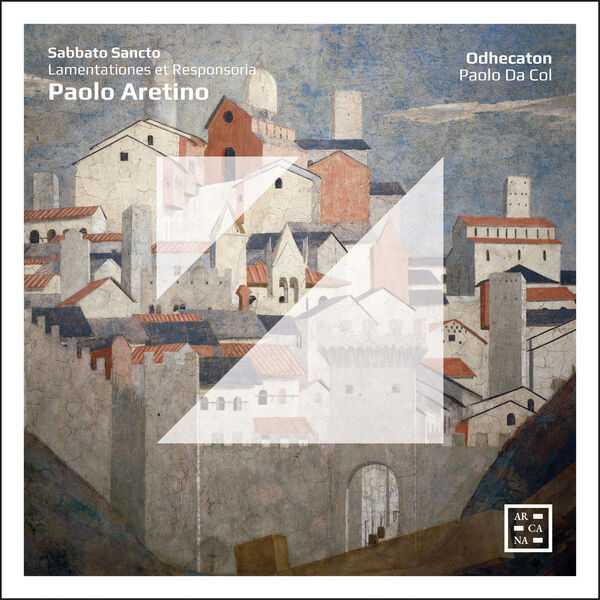

Composer: Paolo Aretino
Performer: Odhecaton
Conductor: Paolo Da Col
Format: FLAC (tracks)
Label: Arcana
Catalogue: A551
Release: 2023
Size: 1.06 GB
Recovery: +3%
Scan: yes
In primo nocturno
01. Lamentatio I
02. Responsorium I. Sicut ovis ad occisionem
03. Lamentatio II
04. Responsorium II. Jerusalem, luge
05. Lamentatio III
06. Responsorium III. Plange quasi virgo
In secundo nocturno
07. Responsorium IV. Recessit Pastor noster
08. Responsorium V. O vos omnes
09. Responsorium VI. Ecce quomodo moritur Iustus
In tertio nocturno
10. Responsorium VII. Astiterunt reges
11. Responsorium VIII. Aestimatus sum
12. Responsorium IX. Sepulto Domino
13. Benedictus
Within the Italian polyphonic repertoire for Holy Week of the first half of the 16th century, a group of works that particularly stands out for its organic, comprehensive and unique qualities are the two books of four-voice Lamentations and responsories for the office of Tenebrae from the Triduum sacrum composed by Paolo Aretino (Paolo Antonio del Bivi, 1508-1584). They were published respectively in 1544 (the responsories: a first printed edition of its kind, to the best of our knowledge) and 1549 (the Lamentations). Both books were reprinted in 1563, a rare occurrence for a collection of this type.
Aretino, a maestro di cappella at both the cathedral and Santa Maria della Pieve in Arezzo, was acclaimed in his own day as a true symbol of the city’s glory, along with his fellow-citizen, the famous writer Pietro Aretino. He also had repeated contacts with the Medici court, and indeed certain characteristic features of his style can be traced to the late-15th century Florentine tradition of regularly using polyphony during the Triduum. In particular we note his use of equal voices and, above all, the adoption of an austere and solemn declamatory style closely linked to the structure of the text. All of this, however, is not only conveyed with extreme refinement, but also includes some very striking encroachments into vocal ranges rarely found in contemporary Italian music. An example is the use of two or three bass voices together with a low bass; as happens, for example, in the Lamentations for Holy Saturday, which in this recording are presented complete, together with their respective responsories.